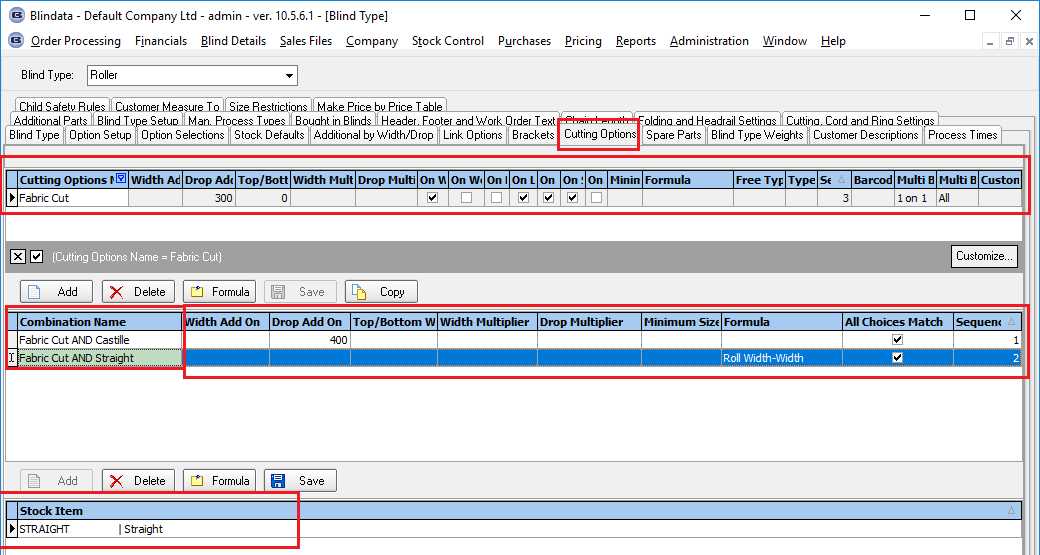Blind Type Dataset¶
There is an import spreadsheet to speed up the setting up of blind types in the system.
The spreadsheet contains information on 'Blind Type', 'Child Safety Rules', ‘Measure To’, ‘Works Order Control’, ‘Label Control’, ‘Option Setup’, ‘Stock Items’, 'Stock Default', 'Additional Options', 'Link Options' and the 'Cutting Options'.
The various spreadsheets have been created with data sets that customers can quickly import and immediately begin processing orders.
The purpose of this functionality is to make it easier for our customers to use EDI.
Here is an example. Company A and Company B are both users of Blindata.
Company A is going to start buying blinds from Company B and want to do this using EDI.
They need to set up their Blindata so they can enter orders and then transmit them to Company B.
When Company B receives them, they will get imported via EDI.
It is a lot easier if the blind type and stock codes being are the same and do not have to be mapped.
Therefore the reason for creating the ‘Blind Type Dataset’ was to allow Company B to send a file to Company A that can be easily imported.
The following improvements have been made to this process.
The samples of the spreadsheets that can be imported via ' Blind Type Dataset' import from Excel procedure into Blindata are attached to this tutorial.
Each block contains a link to a file where an example for import is attached, that is, to check the file, just click on the name of the block and download it.
It is based on the fabrics import spreadsheet, but at the start, there are extra records that will get imported to tables other than fabrics.
Please note that in one document there may be a variation of the tables below, it is also important to know that the data from the tables are imported line by line.
That is, if you need to download a large amount of new data, please import it in the order shown below.
Also, do not forget that for correct import it is important that all values are entered in specific cells, as shown in the screenshots below.
1. Blind Type¶
It is necessary to specify the Blind Type Code, Blind Type Description, Blind Identifier, Nominal Code, Measure To, Manufacturing Location, Category values.

Also, if the blind type record being exported has ‘Bought In’ = true, then the supplier code goes in the supplier code field. If ‘Stock Control’ = true, then the supplier code is blank.
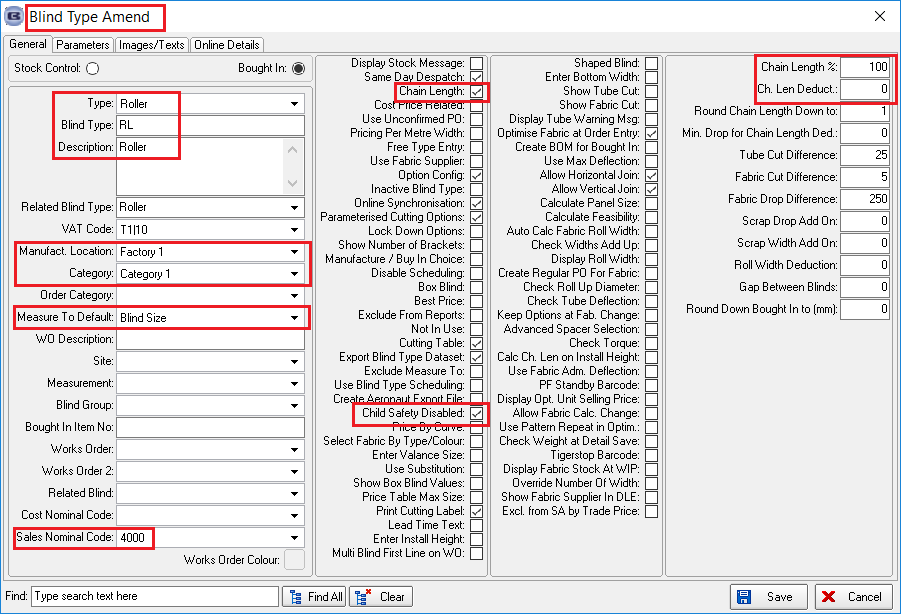
2. Measure To¶
Please note that all fields are required.


3. Works Order Control¶
Please note that all fields are required.
4. Label Control¶
Please note that all fields are required.

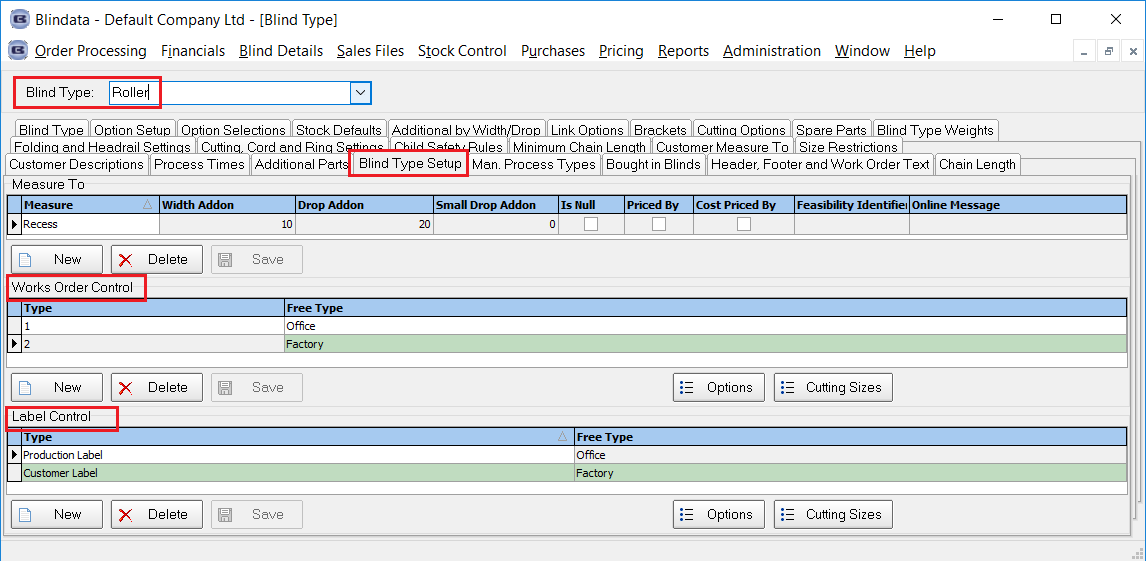
5. Fabrics¶
It is necessary to specify the Fabric Code, Price Band, Fabric Description, Blind Type, Link Option, Supplier Code, Nominal Code, Calculator, Default Code values.

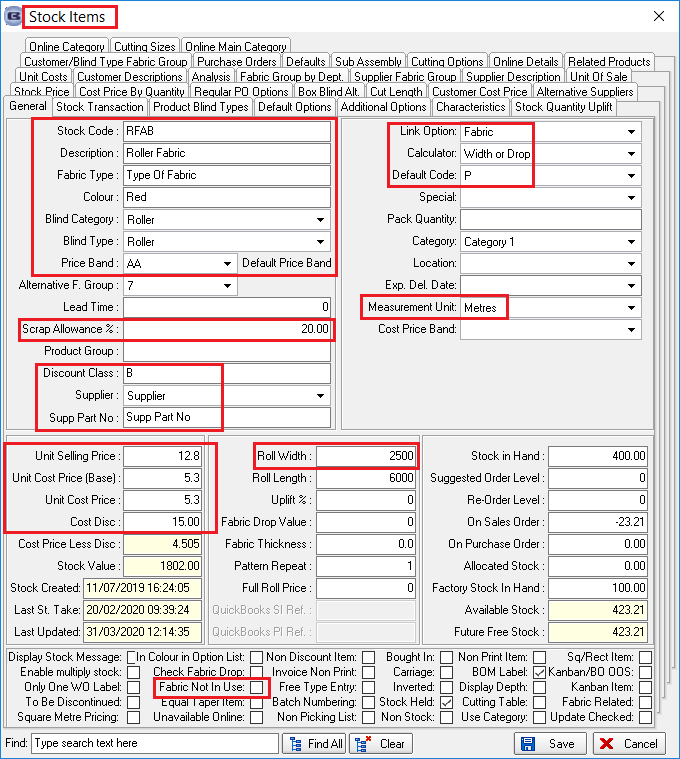
6. Option Setup¶
Please note that all fields are required.


7. Stock Default¶
It is necessary to specify the Stock Code, Blind Type, Dimension Code, Code Letter values.


8. Additional Options¶
It is necessary to specify the Stock Code values.


9. Link Options¶
It is necessary to specify the Blind Type, Option Name values.

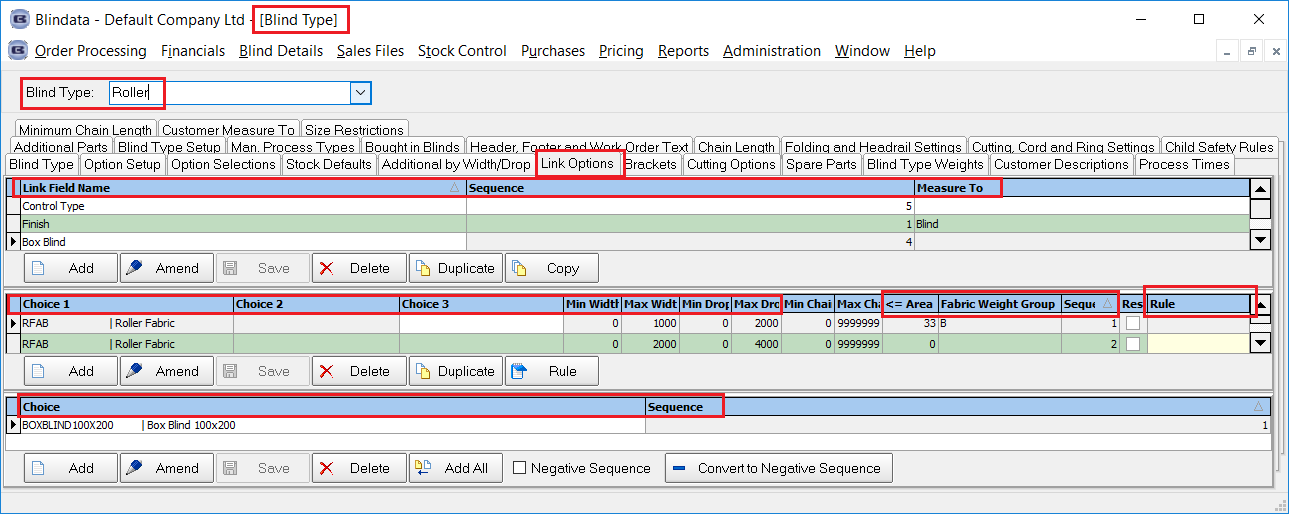
10. Child Safety Rules¶
It is necessary to specify the Blind Type, Operation Method, Drop Greater Than, Drop Less Than, Message values.


11. Cutting Options¶
It is necessary to specify the main cutting values, such as Blind Type Code, Import Identifier, Cutting Options Name, Combination Name, Stock Items, Sequence
Also, the 'Cutting Configuration List' should include the 'Stock Code' of the options and not the 'Stock Description'.
The 'Width Add On Default' or 'Drop Add On Default' or 'Formula' should be entered for the 'Cutting Options'.

